Your cart is currently empty!
Blog
-
Can You Put a Mattress Topper in the Washing Machine?

Keeping your mattress topper clean is essential for a fresh and comfortable sleep environment. But when it comes to washing, many people wonder: Can you put a mattress topper in the washing machine?
The answer depends on the type of mattress topper you have. Let’s break down what you need to know about cleaning different mattress toppers safely and effectively.
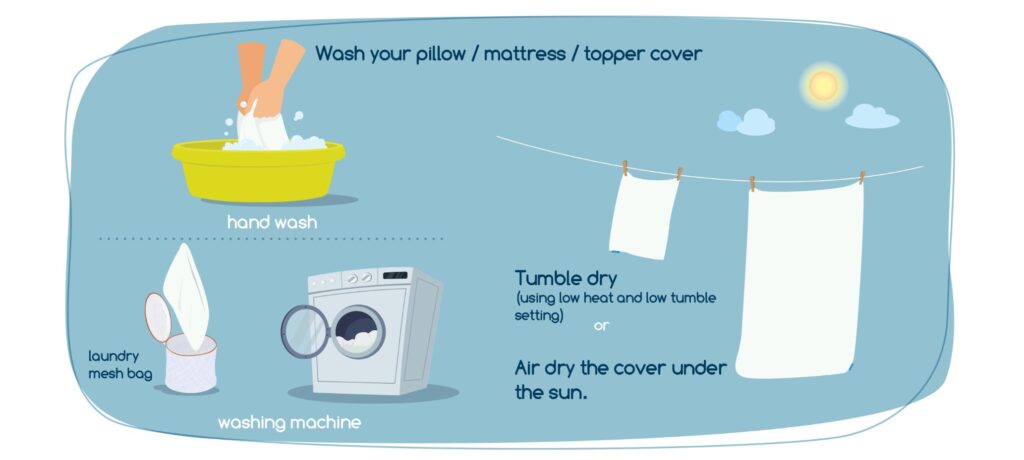
Types of Mattress Toppers and Washing Guidelines
1. Memory Foam Mattress Toppers
- Can you machine wash it?
No. Memory foam toppers should never be washed in a machine. The agitation and water can damage the foam’s structure, causing it to break down or lose its supportive qualities. - How to clean instead:
Spot clean stains with a mild detergent and a damp cloth. For odors, sprinkle baking soda over the topper, let it sit for a few hours, then vacuum thoroughly. You can also air it out in a well-ventilated area.
2. Latex Mattress Toppers
- Can you machine wash it?
No. Like memory foam, latex toppers should not be machine washed as the water and spinning can harm the material. - How to clean instead:
Spot clean with a mild detergent and water mixture. Avoid soaking it. Air dry completely before placing it back on your bed.
3. Fiberfill and Polyester Mattress Toppers
- Can you machine wash it?
Often yes, but always check the care label first. Many fiberfill toppers are machine washable on a gentle cycle with cold water. - Tips for washing:
Use a front-loading washer if possible, as agitator washers can damage the filling. Use mild detergent and avoid fabric softeners. Tumble dry on low heat or air dry.
4. Feather or Down Mattress Toppers
- Can you machine wash it?
Usually yes, but check the label. Use a gentle cycle and mild detergent. - Drying:
Tumble dry on low heat with clean tennis balls or dryer balls to help fluff the filling.
General Tips for Mattress Topper Care
- Use a mattress topper protector: This helps reduce the need for frequent washing by shielding against spills, sweat, and allergens. Protectors are usually machine washable.
- Spot clean promptly: Address spills and stains as soon as they happen to prevent odors and damage.
- Air out regularly: Fresh air helps reduce moisture and odors. Try airing your topper outside or in a well-ventilated room every few months.
- Follow manufacturer instructions: Always check the care label and follow the recommended cleaning method to extend the life of your mattress topper.
Summary
While many mattress toppers cannot be machine washed—especially memory foam and latex types—others like fiberfill and down toppers often can be, with proper care. Spot cleaning and airing out are essential practices to keep your topper fresh and comfortable.
Investing in a good mattress topper protector will make maintenance easier and protect your topper from damage.
If you’re looking for mattress toppers that are easy to clean and maintain, check out our selection of washable fiberfill and hypoallergenic options.
- Can you machine wash it?
-
Tips for Keeping Your Bedding Fresh in the Summer Months
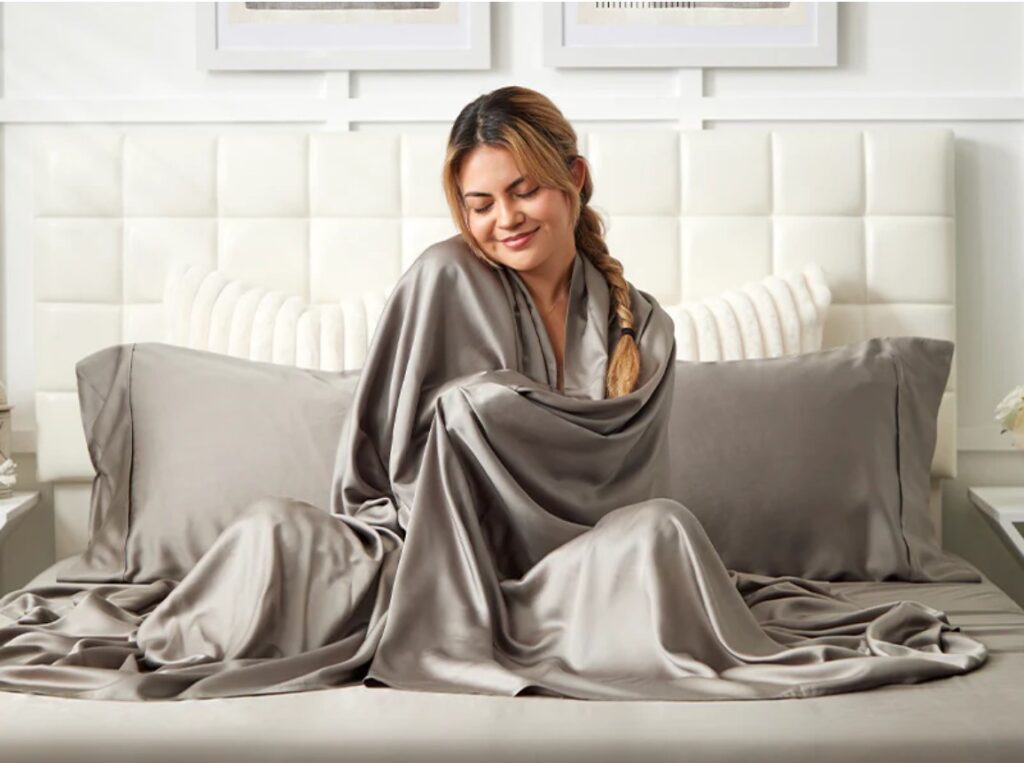
Summer brings longer days, warmer nights — and the challenge of keeping your bedding clean, cool, and comfortable. Rising temperatures and higher humidity can lead to sweaty sheets, stale smells, and restless sleep. But with a few simple habits and the right bedding materials, you can maintain a fresh, inviting sleep environment all season long.
Here are 7 smart tips for keeping your bedding fresh throughout the summer.
1. Choose Breathable, Cooling Fabrics
Switch to lightweight materials that promote airflow and wick moisture away from the body. Ideal summer fabrics include:
- Percale cotton – Crisp and cool to the touch
- Linen – Naturally breathable and moisture-wicking
- Bamboo or Tencel – Silky-smooth and temperature regulating
Avoid synthetic blends like polyester, which trap heat and moisture.
2. Wash Bedding Weekly
Sweat, body oils, and dust accumulate faster during hot months. To prevent odor and bacteria buildup:
🧼 Wash sheets and pillowcases once a week, or more frequently if you sweat heavily at night.
Use a mild detergent and warm water, and dry on a low setting to protect fabric quality.Tip: Add half a cup of white vinegar during the rinse cycle to eliminate lingering odors naturally.
3. Use a Breathable Mattress Protector
Protect your mattress from sweat, allergens, and dust mites with a waterproof, breathable cover. Choose one labeled as:
- Moisture-wicking
- Cooling or temperature-regulating
- Hypoallergenic
This extra layer helps extend the life of your mattress while improving hygiene and comfort.
4. Air Out Your Bedding
Fresh air and sunlight are natural deodorizers. Whenever possible:
- Hang sheets or comforters outside to eliminate musty odors and kill bacteria
- Open windows or run a fan to help dry out bedding during the day
- Leave your bed unmade in the morning to allow moisture to evaporate
Even 15–30 minutes of fresh air exposure can make a noticeable difference.
5. Opt for Cooling Bedding Accessories
Enhance your sleep setup with items designed for hot sleepers:
- Cooling mattress toppers with gel or ventilated foam
- Breathable pillows and pillowcases (ice silk, bamboo, or cotton percale)
- Lightweight summer blankets with temperature-regulating fibers
These accessories can reduce night sweats and help you stay comfortable even on the hottest nights.
6. Rotate and Refresh Bedding Layers
- Flip or rotate your mattress topper every few weeks to prevent moisture build-up in one area
- Wash duvet covers, blankets, and decorative pillow covers at least once a month
- Use multiple sets of sheets and rotate them between washes to extend their freshness
7. Manage Room Temperature and Humidity
Even the freshest bedding can’t do its job if your bedroom is stuffy and humid. Keep things cool by:
- Running a fan, air conditioner, or dehumidifier at night
- Using light-blocking curtains to prevent heat buildup during the day
- Sleeping with your bedroom door open to improve air circulation
Keeping your bedroom environment cool and dry helps bedding stay fresher longer.
Final Thoughts
You don’t need to overhaul your entire bedroom to stay cool and clean in summer. By choosing the right fabrics, washing regularly, and using the right accessories, you can enjoy a refreshing night’s sleep—even in peak heat.
Looking for cooling bedding?
Explore our collection of breathable mattress toppers, ice silk pillowcases, and lightweight cotton sheets — designed to keep you cool, clean, and comfortable all summer long.
-
Tips for Keeping Your Bedding Fresh in the Summer Months

When temperatures rise, your bed can quickly go from cozy to stuffy. Sweating at night, trapped heat, and humid air can make it hard to stay cool and sleep soundly. Fortunately, a few simple changes can help keep your bedding fresh, breathable, and comfortable all summer long.
Here are 7 expert-backed tips to help you create a cooler, cleaner sleep environment during the hottest months of the year.
1. Switch to Lightweight, Breathable Bedding
Heavy winter bedding traps heat and moisture. In summer, opt for lighter layers made from breathable materials like:
- Cotton (especially percale weave) – crisp, cool, and lightweight
- Linen – naturally moisture-wicking and breathable
- Bamboo or Tencel – silky-soft and ideal for hot sleepers
Avoid polyester and other synthetic blends, which can trap heat and cause night sweats.
2. Wash Sheets More Frequently
You’re likely sweating more during the summer — even if you don’t notice it. To prevent odors, bacteria buildup, and skin irritation:
🧺 Wash sheets and pillowcases once a week, or more often if you’re a hot sleeper.
Use cold or warm water with a gentle detergent, and dry on a low heat setting to preserve fabric quality.Pro Tip: Add a cup of white vinegar to the rinse cycle to naturally neutralize odors and soften fabrics.
3. Use a Moisture-Wicking Mattress Protector
Even if you wash your sheets regularly, moisture and bacteria can still seep into your mattress.
Add a waterproof, breathable mattress protector to block sweat, spills, and dust mites without trapping heat. Look for ones labeled “cooling” or “moisture-wicking” for added summer comfort.
4. Air Out Your Bedding Often
Sunlight is a natural disinfectant. Hanging your sheets, pillows, or comforter outside in the fresh air can:
- Kill bacteria
- Reduce musty smells
- Dry out trapped moisture
- Leave a clean, sun-dried scent
Even if you don’t have outdoor space, pulling back the covers each morning and letting your bed “breathe” helps evaporate overnight sweat.
5. Use Cooling Bed Accessories
Small upgrades can make a big difference. Try:
- Cooling mattress toppers (gel-infused memory foam or ventilated latex)
- Chill-tech or ice silk pillowcases
- Cooling blankets made with phase-change materials (PCMs) that regulate body temperature
These products help draw heat away from your body and keep your bed surface cool to the touch.
6. Rotate Your Bedding
Rotate your pillows and flip your mattress topper every few weeks to prevent moisture buildup in one spot. If your bedding has a dual-season design, switch to the summer side (often marked with breathable mesh or a cooler fabric).
7. Consider a Dehumidifier or Fan
If your bedroom is naturally humid, using a fan, air purifier, or dehumidifier can help keep the air dry and circulation flowing — which helps bedding stay fresher longer.
Bonus: Use breathable bed frames or slatted bases to allow airflow under your mattress.
Final Thoughts
Keeping your bed fresh in summer doesn’t require a full overhaul — just a few smart adjustments. By switching to lighter, breathable bedding and maintaining a regular cleaning routine, you can create a sleep oasis that stays cool and clean, no matter how high the temperature climbs.
Looking for breathable bedding for hot nights?
Explore our collection of cooling mattress toppers, ice silk pillowcases, and summer-ready cotton sheet sets – made to keep you cool and comfortable all season long.
-
How to Properly Clean and Maintain a Mattress Topper
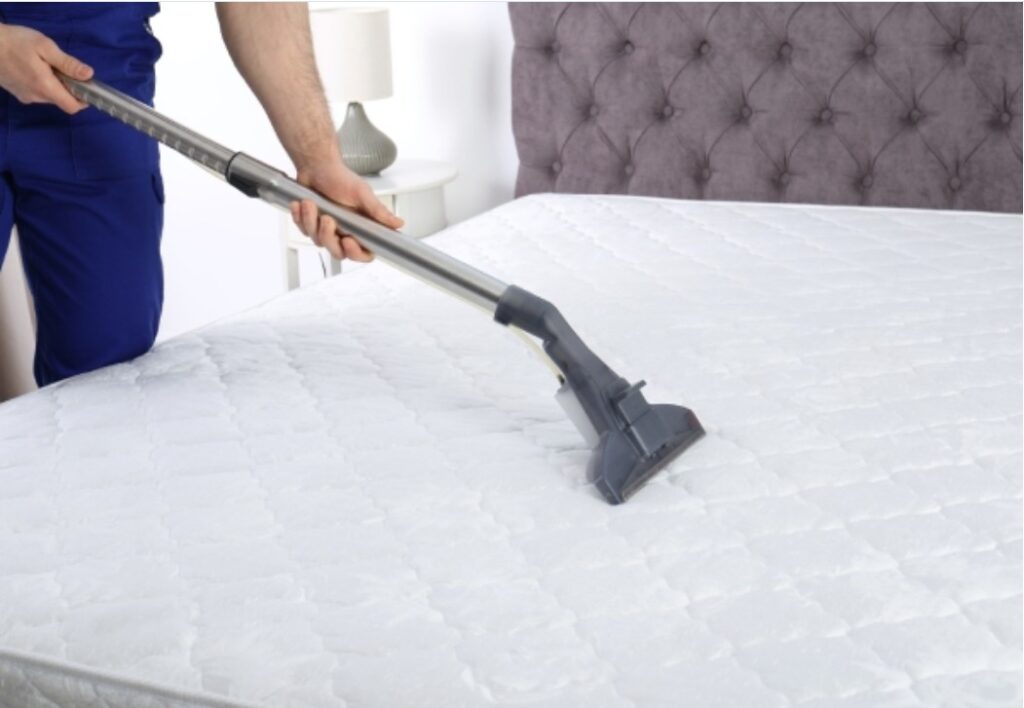
A quality mattress topper can extend the life of your mattress and significantly improve your sleep comfort — but like any bedding item, it needs regular care to stay clean, fresh, and supportive.
Whether you own a memory foam, latex, feather, or cooling gel topper, proper cleaning and maintenance are essential to preserve its performance and hygiene. In this post, we’ll walk you through exactly how to clean, store, and care for your mattress topper so it lasts for years.
Why Cleaning Your Mattress Topper Matters
Even with a fitted sheet, mattress toppers can collect:
- Sweat and body oils
- Dead skin cells
- Dust and allergens
- Spills or stains (especially if you eat or drink in bed)
Over time, this buildup can lead to odors, bacteria growth, and deterioration of the material.
How Often Should You Clean Your Mattress Topper?
- Light cleaning: Every 1–2 months
- Deep cleaning: Every 3–6 months, or as needed (especially after spills or illness)
- Spot cleaning: Immediately when accidents happen
Tip: Always check the care label for specific instructions, as materials like memory foam and latex have unique cleaning needs.
Step-by-Step Guide: How to Clean a Mattress Topper
1. Remove the Topper
Take the topper off the mattress and remove all sheets or covers. Place it on a clean, flat surface, preferably outdoors or in a well-ventilated area.
2. Vacuum Thoroughly
Use a handheld vacuum with a soft brush attachment to gently remove dust, hair, and debris from the surface and crevices. This helps reduce allergens and keeps your topper fresh.
3. Spot Clean Stains
Use a mild detergent mixed with water (avoid harsh chemicals).
- Dampen a clean cloth or sponge with the soapy solution
- Gently blot the stained area (don’t rub)
- Use another cloth dampened with plain water to rinse
- Pat dry with a towel
❌ Never soak the topper — especially foam or latex. Excess moisture can damage the material or lead to mold.
4. Deodorize with Baking Soda
Sprinkle a light layer of baking soda over the entire surface. Let it sit for 8–12 hours to absorb odors, then vacuum it up thoroughly.
Optional: Add a few drops of essential oil (like lavender) to the baking soda for a fresh scent.
5. Air It Out
Let the topper air dry completely before placing it back on your bed. This may take several hours — or longer if you live in a humid climate.
💡 Tip: Sunlight helps kill bacteria and freshen foam toppers naturally, but don’t leave latex or gel foam toppers in direct sun for too long, as UV can degrade them.
What NOT to Do
- ❌ Don’t put foam or latex toppers in the washing machine
- ❌ Don’t steam clean or soak with water
- ❌ Don’t use bleach or harsh cleaning agents
- ❌ Don’t dry with high heat or place near open flames or heaters
Maintaining Your Mattress Topper: Pro Tips
✔ Use a Mattress Topper Cover
A waterproof or washable cover protects your topper from spills, sweat, and stains — and it’s much easier to clean than the topper itself.
✔ Rotate or Flip (if applicable)
Rotating your topper every 1–2 months helps prevent body impressions and sagging. Some dual-sided toppers can also be flipped.
✔ Keep It Dry
If your room tends to be humid, consider using a dehumidifier or airing out your topper regularly to prevent mildew or mold growth.
✔ Store Properly
If you’re not using your topper year-round, store it in a breathable bag or cotton sheet (never plastic) in a cool, dry place. Avoid compressing it for long periods, as this can damage the structure.
Final Thoughts
Caring for your mattress topper doesn’t have to be difficult. With a little monthly maintenance, you can extend its life, improve your sleep hygiene, and enjoy a fresher, more comfortable bed every night.
Want a topper that’s easy to clean and built to last?
Check out our collection of washable cooling toppers, breathable latex options, and protective covers designed for effortless upkeep.

-
How Often Should You Wash Your Sheets and Pillowcases?

We spend about a third of our lives in bed — but how often are you actually washing the sheets and pillowcases you sleep on every night?
If you’re not sure, you’re not alone. Many people go longer than they should between washes. The truth is, your bed can collect sweat, skin oils, dirt, dead skin cells, and even dust mites — all of which build up quickly.
So how often should you wash your bedding? Let’s break it down.
The Short Answer
You should wash your sheets and pillowcases once a week.
This is the standard recommendation from most dermatologists, allergists, and sleep hygiene experts.
Why Weekly Washing Is Important
1. Skin Health
Dirty pillowcases and sheets can clog pores and trigger acne, especially if you have sensitive or oily skin. Bacteria, makeup residue, and oil from your face and hair build up fast.
2. Allergen Control
Sheets collect dust mites, pollen, pet dander, and other allergens. Washing them regularly helps reduce allergy symptoms like sneezing, congestion, and itchy eyes.
3. Better Sleep
Fresh bedding can actually help you sleep better. Clean sheets feel more comfortable, smell better, and create a more inviting sleep environment.
4. Hygiene and Odor
Even if you shower before bed, your sheets still absorb sweat, dead skin cells, and body oils. Over time, this can lead to musty odors and bacteria buildup.
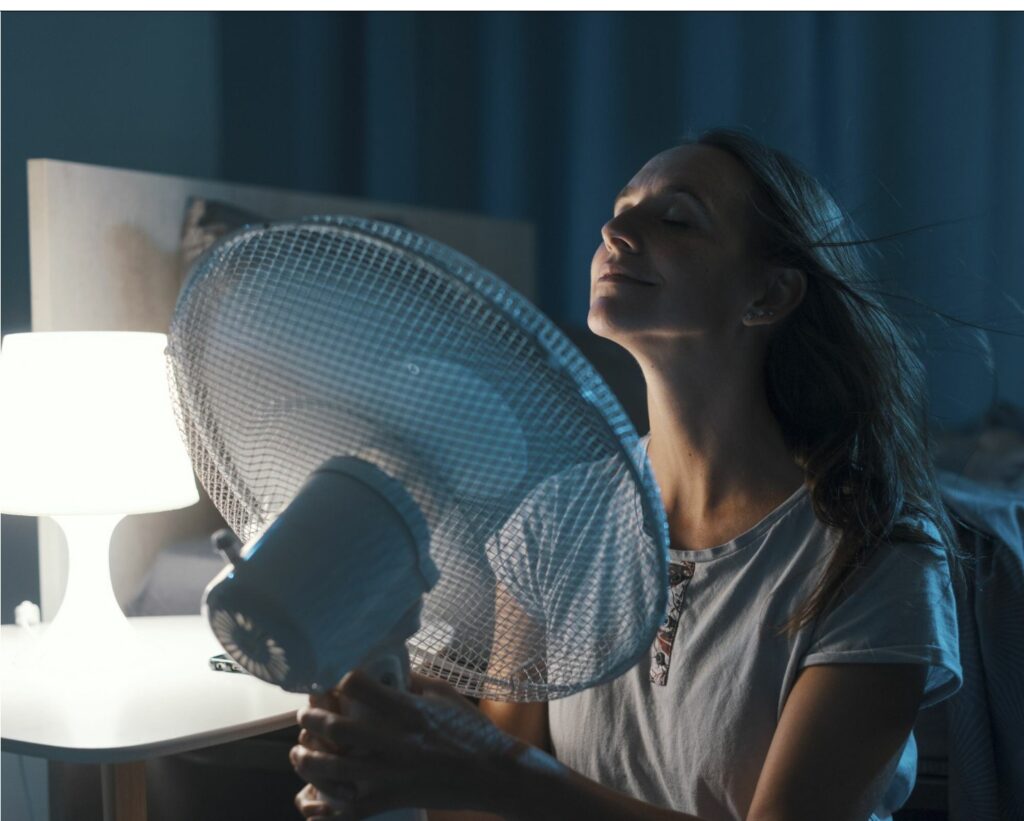
How Often to Wash Other Bedding Items
Item Recommended Frequency Sheets Every 7 days Pillowcases Every 3–7 days Blankets Every 2–3 weeks Comforters/Duvets (with cover) Every 1–2 months Duvet Covers Every 2 weeks Mattress Protectors Every 1–2 months Pillows Every 3–6 months (check care label)
Exceptions: When You Might Need to Wash More Often
You should wash sheets and pillowcases more frequently if:
- You sweat a lot at night or sleep hot
- You sleep nude
- You have allergies, eczema, or acne-prone skin
- You eat or drink in bed
- Your pet sleeps in bed with you
- Someone in your household is sick
In these cases, washing every 3–4 days can help keep your bed cleaner and healthier.
Pro Tips for Washing Bedding Properly
- Use hot water (130–140°F / 54–60°C) if the care label allows. It kills bacteria and dust mites more effectively.
- Choose fragrance-free detergent if you have sensitive skin or allergies.
- Avoid fabric softeners on sheets—they can leave residue and reduce breathability.
- Dry thoroughly to prevent mildew. Consider line-drying for natural freshness.
- Wash separately from towels or clothes to protect the fabric and avoid overloading the machine.
What About Pillowcases Specifically?
Because your pillowcase touches your face and hair every night, it can get dirty faster than sheets. If you have acne-prone or oily skin, dermatologists recommend washing pillowcases 2–3 times per week.
Pro tip: Rotate between 2–3 pillowcases throughout the week so you always have a clean one ready.
Final Thoughts: Clean Sheets = Better Sleep
Washing your bedding regularly might seem like a chore, but the payoff is huge: cleaner skin, fewer allergens, and better rest. Think of it as an easy way to improve your health and your sleep hygiene with very little effort.
So set a reminder — your future well-rested self will thank you.
Want Easy-Care Bedding?
Check out our top picks for:
- Machine-washable cooling bamboo sheets
- Fast-drying percale cotton pillowcases
- Durable twin XL sets for dorms
- Hypoallergenic bedding essentials
-
Cooling Bedding Explained: What to Look for If You Sleep Hot
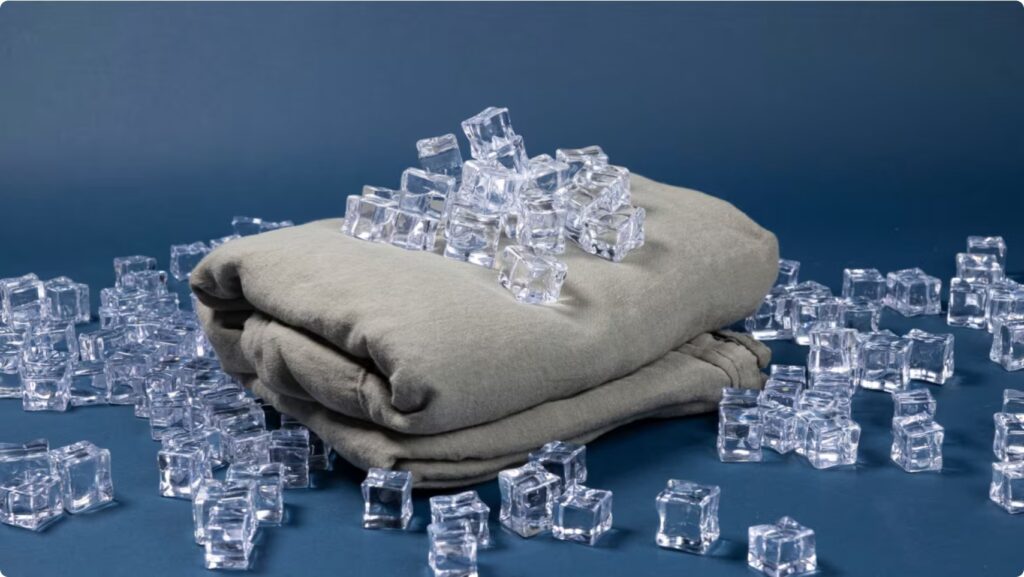
If you often wake up sweaty or toss and turn because you’re too warm, you’re not alone. Millions of people struggle with overheating at night — whether due to warm climates, high metabolism, or simply using the wrong bedding. The good news? Cooling bedding can make a major difference in your sleep quality.
In this guide, we’ll break down what to look for in cooling sheets, comforters, and mattresses — and which materials actually live up to the hype.
Why Cooling Bedding Matters
Overheating disrupts your sleep cycles, reduces REM sleep, and can leave you feeling groggy in the morning. High body temperature during the night is one of the most common causes of sleep disruption.
That’s where cooling bedding comes in — it’s designed to:
- Regulate body temperature
- Wick away sweat
- Increase airflow and breathability
- Help you fall asleep faster and stay asleep longer
What to Look for in Cooling Bedding
Here are the key features and materials that actually help you sleep cooler:
1. Breathable, Natural Fabrics
Look for sheets and pillowcases made with natural, breathable fibers. These allow air to circulate and moisture to evaporate, keeping your body temperature stable.
Best options:
- Cotton (especially percale weave) – Light, crisp, and breathable
- Linen – Loosely woven, moisture-wicking, and ideal for hot climates
- Bamboo/Viscose – Ultra-soft, moisture-wicking, and thermoregulating
- Tencel (Lyocell) – Smooth and breathable, with a silky feel
Avoid: Microfiber and polyester. These trap heat and sweat due to their tightly woven synthetic structure.
2. Percale vs. Sateen Weave
If you choose cotton sheets, pay attention to the weave:
- Percale: A plain, grid-like weave that feels crisp and cool. Best for hot sleepers.
- Sateen: A tighter weave with a silky texture. Softer and slightly warmer than percale.
Pro tip: For the coolest feel, go with cotton percale in a thread count between 200 and 300.
3. Moisture-Wicking Technology
Some cooling bedding is engineered with moisture-wicking properties. These sheets pull sweat away from your skin, helping it evaporate quickly.
Look for terms like:
- “Temperature-regulating”
- “Moisture-wicking”
- “Cooling fibers”
- “Phase-change materials (PCM)” – These adapt to your body heat and help maintain a stable temperature
4. Lightweight and Breathable Comforters
If you use a comforter or duvet, choose one that’s labeled lightweight or cooling. Features to look for:
- Fill: Opt for down alternatives, bamboo, or Tencel
- Shell: Choose breathable cotton or bamboo
- Construction: Baffle-box or channel stitching promotes airflow
Avoid: Heavy down or polyester comforters unless labeled as cooling or moisture-wicking.
5. Cooling Mattress Toppers and Protectors
If your mattress sleeps hot, you can add a cooling mattress topper to improve airflow and reduce heat retention. Good options include:
- Gel-infused memory foam – Disperses heat
- Latex foam – Naturally cooler than traditional memory foam
- Copper or graphite-infused foams – Conduct heat away from your body
- Cooling mattress protectors – Add a breathable layer and wick away sweat
Bonus Tips for Staying Cool at Night
- Use a fan or open a window for better airflow
- Sleep with fewer layers – sometimes, a single sheet is enough
- Wear moisture-wicking pajamas or light cotton sleepwear
- Stay hydrated – dehydration can cause overheating
- Shower before bed – a cool rinse can help lower body temperature

Best Cooling Bedding Materials at a Glance
Material Cooling Ability Feel Best For Cotton (Percale) ⭐⭐⭐⭐ Crisp & cool Hot sleepers Linen ⭐⭐⭐⭐ Textured & airy Summer climates Bamboo ⭐⭐⭐⭐ Silky & breathable Sweaty sleepers Tencel ⭐⭐⭐ Smooth & soft Moisture control Polyester/Microfiber ⭐ Warm & dense Cold climates only
Final Thoughts: Invest in Better Sleep
Cooling bedding isn’t just a luxury — it’s a smart investment in your health. If you’re sleeping hot, choosing breathable materials like cotton, linen, or bamboo and paying attention to weave and construction can make all the difference.
Whether you’re upgrading your summer bedding or battling night sweats year-round, the right cooling sheets, comforter, and topper can transform your sleep.
Shop Smart, Sleep Cool 😴
Looking for recommendations? Check out our curated picks for:
- Cooling bamboo sheet sets
- Percale cotton twin XL dorm sheets
- Lightweight summer comforters
- Gel-infused cooling toppers
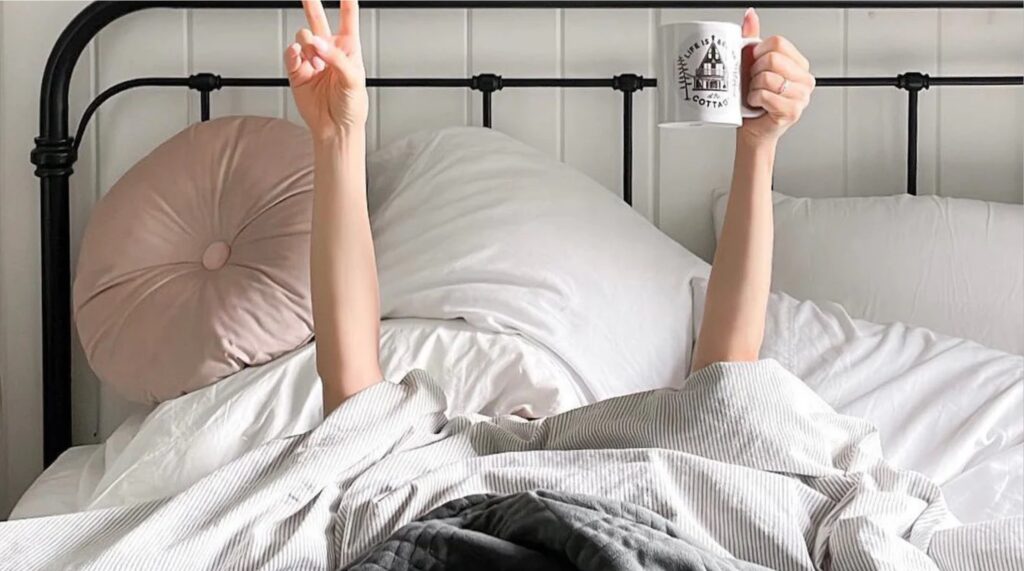
-
Why It’s Worth Spending a Little More on Sheets—Even for a College Dorm Room
When you’re shopping for college dorm room essentials, sheets might not seem like the place to splurge. But as sleep experts and textile pros agree, investing in a quality set of sheets—especially cotton ones—is absolutely worth it, even if you’re furnishing a tiny twin XL bed.
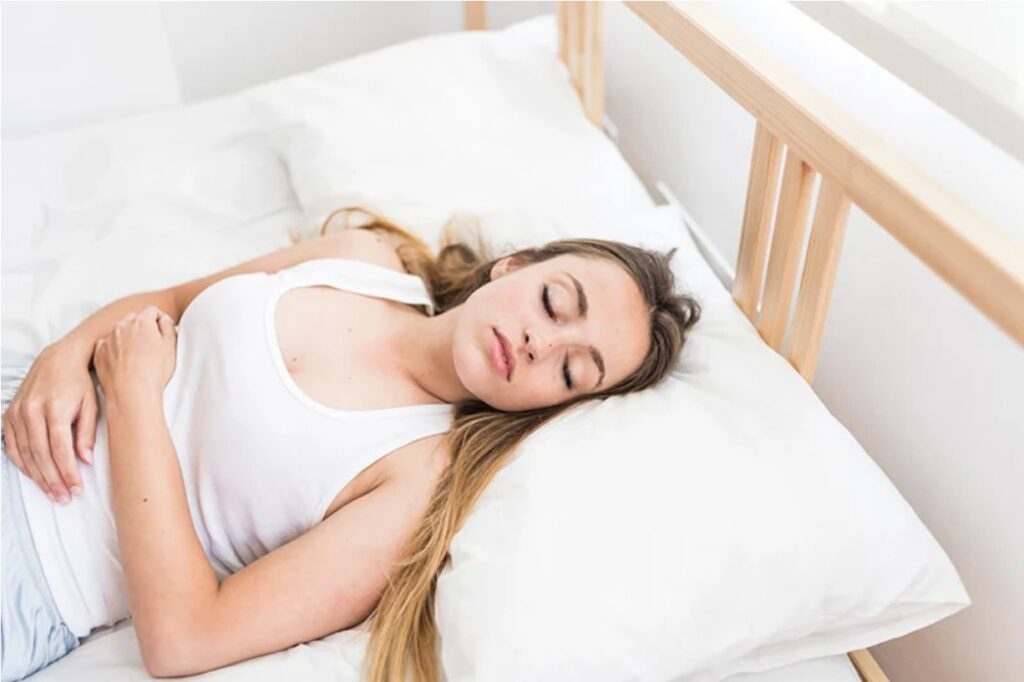
Dorm Beds Are Not Standard Twins
Most dorm beds use twin XL mattresses, which are 5 inches longer than standard twin beds. That means your old twin sheets from home (or the cartoon-printed set from childhood) likely won’t fit properly.
Yes, it’s tempting to make do with what you have or grab the cheapest synthetic option on Amazon—but when it comes to comfort, breathability, and durability, 100% cotton sheets are the smarter choice.
Why Cotton Sheets Are Better for Dorm Life
Most experts recommend 100% cotton sheets for dorms because they strike the best balance of:
- ✅ Comfort: Soft and breathable for a better night’s sleep
- ✅ Temperature regulation: Keeps you cool in summer and warm in winter
- ✅ Durability: Holds up to frequent washing
- ✅ Value: Lasts multiple years—long past college
Microfiber or jersey sheets are cheap and widely marketed to college students, but they can trap heat and make you sweat at night. That’s the last thing you want when you can’t control your dorm room’s air conditioning.
“Synthetic fabrics are tightly woven and don’t let air pass through, which means they trap heat and can make you hot,” says Jackie Reeve, textile and bedding expert.
Our Favorite Affordable Cotton Sheets for Dorm Beds
🛏 Top Pick: Target’s Threshold 400 Thread Count Performance Sheet Set
- Price: ~$29 for a twin/twin XL set
- Material: 100% cotton
- Fit: Designed for twin XL dorm mattresses
- Benefits: Gets softer after each wash, long-lasting, available in solids and prints
These sheets offer premium quality at a budget-friendly price—making them perfect for college students who want to stay comfortable without overspending.
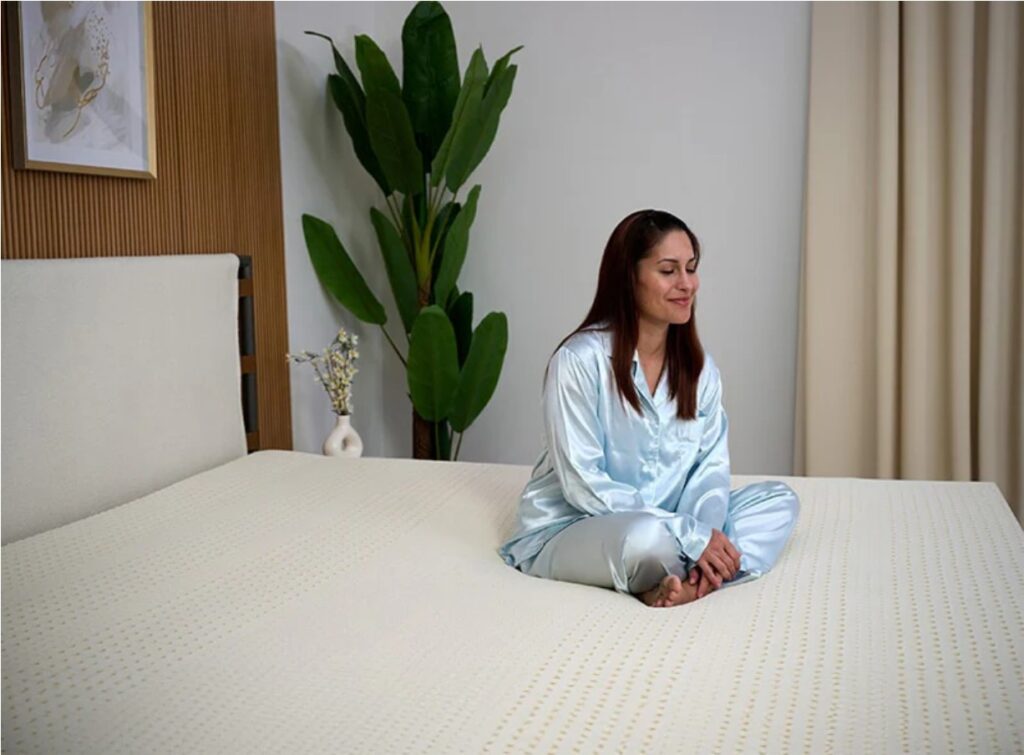
Don’t Try to Stretch Regular Twin Sheets
Twin-size sheets are made for 75-inch mattresses. Dorm beds (twin XL) are 80 inches long. That’s a 5-inch difference, and even a small size mismatch can lead to corners popping off or poor fit.
Some sets (like Target’s) are labeled “twin/twin XL”, meaning they’ll work on both sizes. But be sure to check that the fitted sheet is at least 80 inches long before you buy.
Buy Two (or More) Sheet Sets
Bringing only one set of sheets might save money upfront—but you’ll regret it on laundry day. Experts recommend:
- 🧺 At least two sets so you always have a clean backup
- 🧺 Three sets if you’re unsure how often you’ll actually do laundry
As Reeve puts it:
“Dirty sheets can just live in the hamper until laundry day—no need to wash them as soon as they come off the bed.”
What to Do With Dorm Sheets After College
The best thing about buying durable cotton sheets? You can keep using them after graduation:
- Use them on a regular twin bed at home or in a guest room
- Store them for air mattresses when hosting visitors
- Donate them to thrift stores (check donation policies first)
- Repurpose as drop cloths for painting or crafting
- Recycle them through a textile recycling program
Good sheets don’t need to go to waste.
Final Thoughts: Dorm Comfort Starts With Quality Bedding
When you’re pulling all-nighters, juggling classes, and living in a shared space, a good night’s sleep is priceless. That’s why spending just a little more on breathable, comfortable cotton sheets is a smart move, even for a budget-conscious college student.
Make sure they’re twin XL, get at least two sets, and choose cotton over synthetics—and you’ll thank yourself every night.
Dorm Sheet Buying Quick Tips ✅
What to Look For Why It Matters 100% cotton Breathable, soft, lasts longer Twin XL size Fits dorm mattresses properly At least 2 sets Always have a clean backup Avoid microfiber Traps heat, less breathable Look for 300–400 thread count Balanced softness and durability -
What is Thread Count and Does it Really Matter?

Thread Count Myth: What Really Matters When Buying Cotton Sheets
If you’ve ever shopped for cotton sheets, you’ve probably seen manufacturers touting ultra-high thread counts—800, 1,000, even 1,200. But here’s the truth: thread count is often misleading. And when it comes to finding truly soft, durable, breathable sheets, higher numbers don’t always mean better quality.
We’ve tested dozens of sheet sets and consulted textile experts to uncover what really makes sheets feel great—and last longer. Here’s what you need to know.
What Is Thread Count?
Thread count refers to the number of yarns woven into one square inch of fabric, both horizontally (weft) and vertically (warp). A higher count can mean a smoother, denser weave—but only if the quality of the cotton and yarns is high.
📌 Important: Many brands inflate thread counts by using multi-ply yarns (twisting two or more threads together), then counting each ply as a separate thread. So, a 500-thread-count two-ply sheet could be labeled as 1,000 thread count—an obvious marketing trick.
What’s the Ideal Thread Count?
➤ For Percale Sheets:
- Best range: 250–300
- Upper limit: 400–500 (if made with fine, high-quality yarns)
- Average quality: ~180
- Feel: Crisp, cool, breathable—great for hot sleepers
➤ For Sateen Sheets:
- Best range: 300–600
- Upper limit: Slightly higher, but fabric gets heavier
- Average quality: ~250–300
- Feel: Smooth, soft, slightly heavier—luxurious drape
🧠 Expert tip: Missy Tannen, co-founder of Boll & Branch, says, “Too high of a thread count means that air doesn’t circulate well and you’ll sleep hot.”
Why Thread Quality Beats Thread Count
According to textile specialists, what matters most isn’t the number of threads—but the quality of the yarn and the type of cotton used.
Look for:
- ✅ Long-staple or extra-long-staple (ELS) cotton
(e.g., Pima, Supima, or genuine Egyptian cotton) - ✅ Combed cotton – removes short fibers and impurities, creating a smoother and more durable fabric
- ✅ Single-ply yarns – more flexible and softer than multi-ply yarns
Avoid:
- ❌ Sheets with suspiciously high thread counts (above 600 for sateen or 400 for percale)
- ❌ Printed designs on low-thread-count fabric (used to mask lower quality)
Percale vs. Sateen: Which One Is Right for You?
Feature Percale Sateen Weave Plain weave Satin weave Texture Crisp, matte Smooth, lustrous Breathability High Moderate Ideal For Hot sleepers, summer Cooler climates, winter Typical Thread Count 200–400 300–600
Real-Life Examples
- 🛏 Best percale pick: L.L.Bean’s 280-Thread-Count Pima Cotton Percale Sheet Set — crisp, cool, and breathable.
- 💤 Best sateen picks: JCPenney Home 400 TC Wrinkle Guard and Cuddledown’s 400 Thread Count Sateen — soft with a silky feel.
Final Advice: Don’t Be Fooled by the Numbers
Instead of getting caught up in thread count hype, focus on:
- The type of weave (percale or sateen)
- The quality of cotton fibers
- Whether the fabric uses single-ply yarns
- Reputable certifications like OEKO-TEX or GOTS for organic and safe materials
As Vicki Fulop of Brooklinen said:
“Thread count certainly matters, but it’s not the only thing that matters.”
FAQ: Thread Count & Sheet Quality
Q: Is 1,000-thread-count better than 300?
A: Not necessarily. If it’s made with low-quality yarn or multi-ply threads, a 1,000-count sheet could feel rougher and sleep hotter than a high-quality 300-count set.Q: What’s better for hot sleepers—percale or sateen?
A: Percale. Its lighter, looser weave allows more airflow, keeping you cooler.Q: How can I spot inflated thread counts?
A: Anything above 600 for sateen or 400 for percale is likely marketing spin. Look for clear descriptions of fiber type and ply count. -
Latex vs. Memory Foam Mattress Topper: Which One Is Right for You?
Choosing the right mattress topper can significantly improve your sleep quality. Two of the most popular options are latex and memory foam mattress toppers. While both offer comfort and pressure relief, they differ in material, feel, durability, and overall performance.
In this guide, we’ll break down the key differences between latex and memory foam toppers—helping you decide which is better for your body, sleep style, and budget.
Quick Comparison Table: Latex vs. Memory Foam
Feature Latex Mattress Topper Memory Foam Mattress Topper Comfort Balanced support & softness Deep contouring & soft feel Responsiveness Fast bounce, easy to move Slow response, body-hugging Breathability Highly breathable Retains more heat Durability 5–7+ years 3–5 years Eco-Friendliness Natural & biodegradable Synthetic, may off-gas Price Higher, but longer-lasting More affordable
What Is a Latex Mattress Topper?
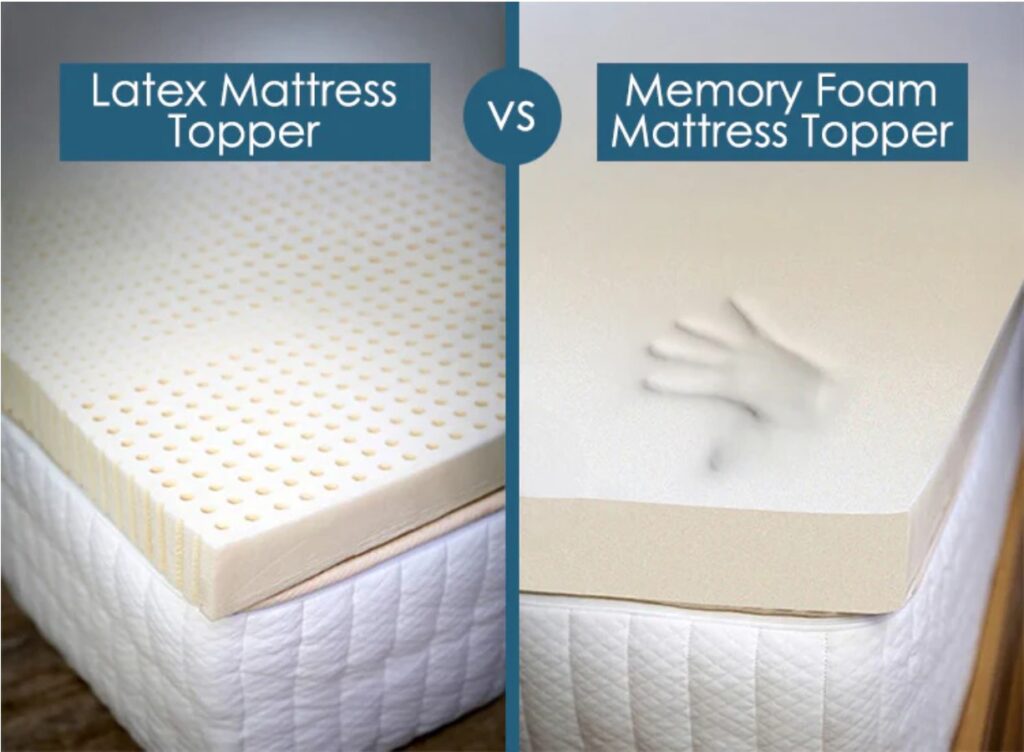
Latex toppers are made from natural rubber tree sap, processed using either the Dunlop or Talalay method. They offer a firmer, more buoyant feel than memory foam and are known for their eco-friendliness, durability, and ventilation.
Pros:
- 🌿 Natural & Eco-Friendly: Organic latex is biodegradable, chemical-free, and hypoallergenic.
- 💨 Breathable: Open-cell structure allows air to flow freely—ideal for hot sleepers.
- 💪 Responsive Support: Quick rebound helps reduce motion transfer and ease movement.
- 🛏 Long-Lasting: Resistant to sagging; holds its shape for years.
- 🧍 Supportive: Excellent for spinal alignment and back sleepers.

Cons:
- 💰 Higher price point.
- 🧳 Heavier and harder to move.
- ⚠️ Rare latex allergies (choose deproteinized latex for sensitive users).
What Is a Memory Foam Mattress Topper?
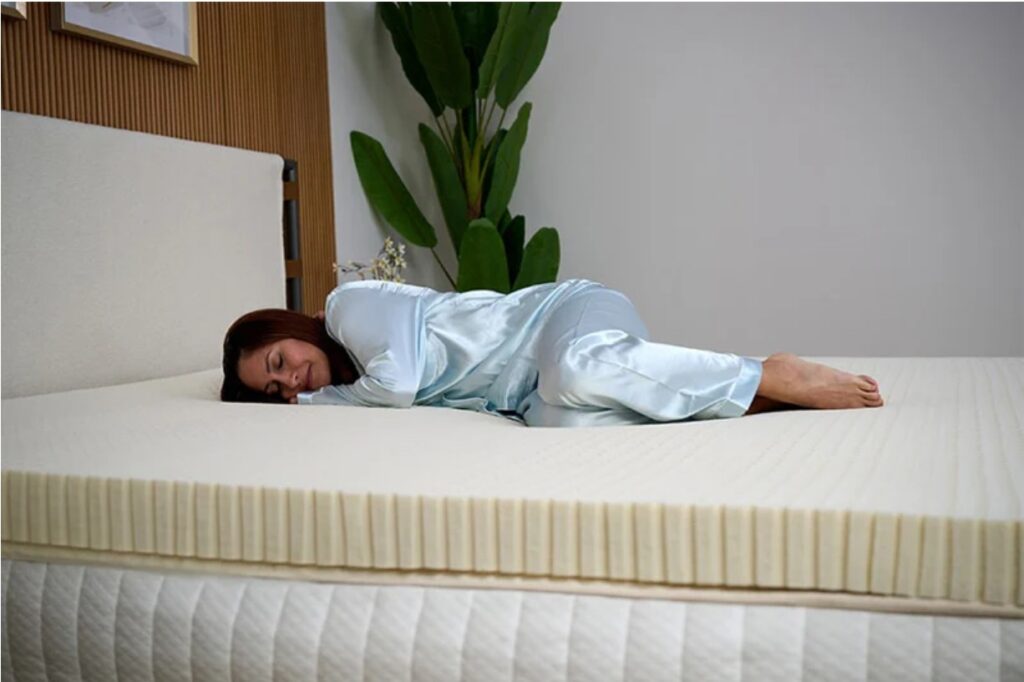
Memory foam, or viscoelastic foam, is made from polyurethane. It conforms closely to your body shape, offering a “cradling” sensation that eases pressure points.
Pros:
- 🤗 Excellent Pressure Relief: Ideal for side sleepers and those with joint pain.
- 💤 Deep Contouring: Molds to your body’s curves for a hugging sensation.
- 🔇 Motion Isolation: Great for couples—minimizes disturbance when your partner moves.
- 💸 Affordable: Offers good comfort at a lower price point.
- 🔄 Versatile: Works well on old or firm mattresses.

Cons:
- 🔥 Heat Retention: Traditional memory foam traps body heat.
- 🧪 Off-Gassing: New foam may emit a chemical smell (usually fades in 24–48 hrs).
- 🐢 Slow Bounce: Can make moving or turning over more difficult.
- 📉 Less Durable: May sag or indent after a few years, especially lower-density foams.
How to Choose the Right Mattress Topper

1. Your Sleeping Position & Body Weight
- Side sleepers / lighter individuals: Choose a soft memory foam or Talalay latex topper.
- Back sleepers / average weight: Medium-firm latex for support and comfort.
- Stomach sleepers / heavier individuals: Firmer Dunlop latex is ideal for spinal alignment.

2. Heat Sensitivity
- Sleep hot? Go with latex, which naturally regulates temperature.
- Prefer a cozy feel? Memory foam offers warmth and a snug fit.

3. Budget & Longevity
- Short-term use / tight budget: Memory foam is cost-effective.
- Long-term investment / eco-conscious: Latex is more durable and sustainable.
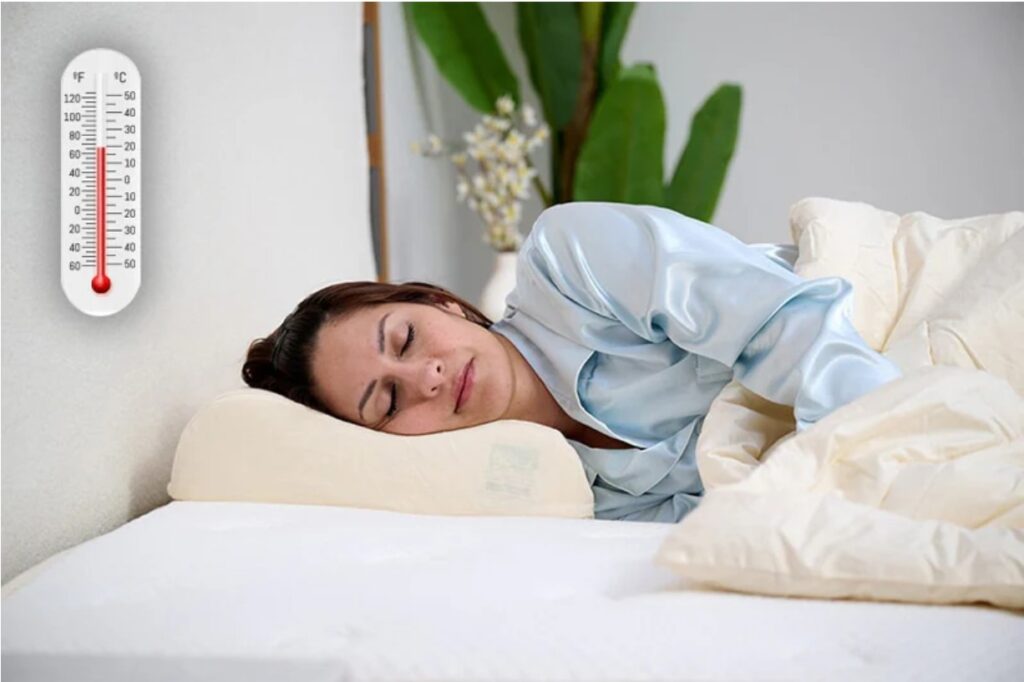
Final Verdict: Which One Wins?
There’s no one-size-fits-all answer. It depends on your preferences and priorities:
- 🟢 Choose latex if you want a cooler, bouncier, and more durable topper made from natural materials.
- 🔵 Choose memory foam if you prefer deep contouring, pressure relief, and a softer, more affordable option.
No matter which you choose, always check for certifications like GOLS, OEKO-TEX, or CertiPUR-US to ensure product safety and quality.
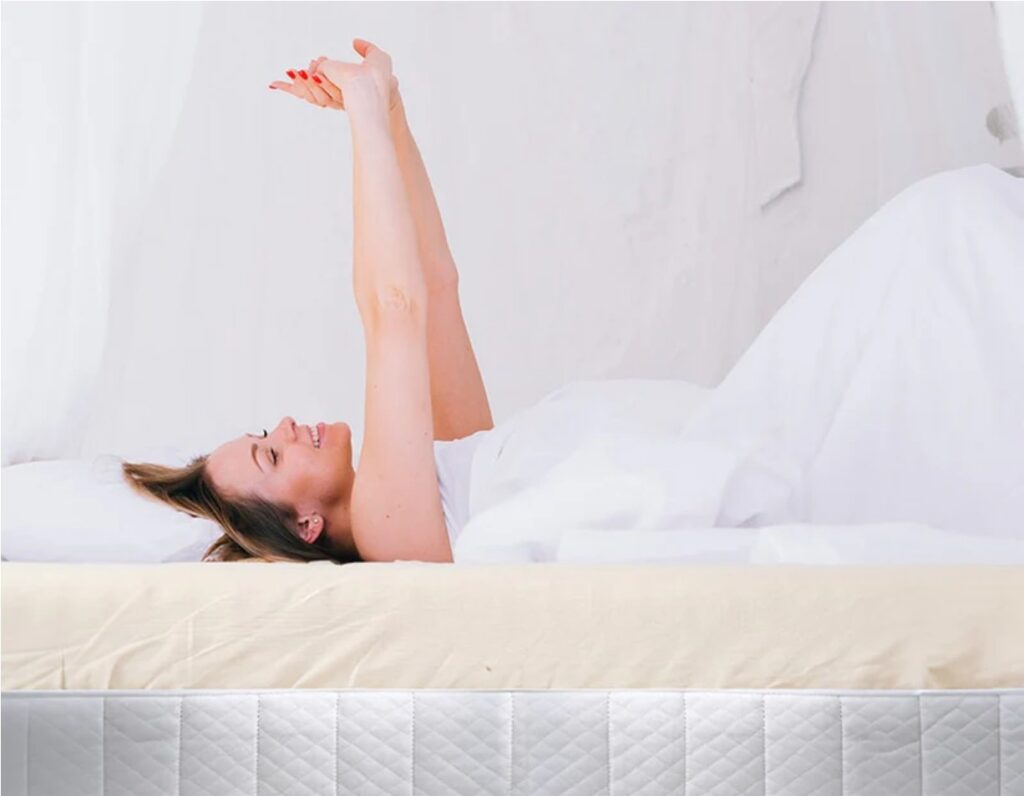
FAQs
Q1: Is latex safe for allergy sufferers?
A: Yes—natural latex is hypoallergenic and resistant to dust mites. However, those with latex allergies should look for deproteinized or synthetic blends.Q2: Will memory foam sag over time?
A: Lower-density memory foam may sag after a few years. Look for foam with at least 3 lb/ft³ density for better durability.Q3: What topper thickness should I choose?
A: 2–3 inches is ideal. Choose 2 inches for extra support and 3 inches for more cushioning.
-
The Difference Between Cotton, Bamboo, and Microfiber Sheets

Microfiber vs. Bamboo Sheets: Which Should You Choose?
Choosing the perfect bed sheets starts with selecting the right material. While cotton used to be the default, today’s bedding market offers a wider range of fabrics — from eco-friendly bamboo to high-tech microfiber. Torn between the two? You’re not alone. This guide breaks down the pros and cons of microfiber vs. bamboo sheets to help you make an informed decision.
We went deep into the weave — from consulting textile experts around the globe to stress-testing sheets by hand — to understand what truly separates these fabrics. Here’s what we found.
Bamboo vs. Microfiber: The Basics
Bamboo sheets are made from the bamboo plant, often processed into bamboo viscose (also known as bamboo rayon). This natural material is praised for being soft, breathable, moisture-wicking, and eco-friendly. Bamboo grows rapidly with minimal water and no pesticides, making it a sustainable choice for bedding.
Microfiber sheets, on the other hand, are synthetic. They’re made from ultra-fine fibers of polyester or nylon, tightly woven to create soft, plush sheets that are durable, wrinkle-resistant, and typically more affordable than bamboo.
Now let’s compare how these two materials perform across key bedding categories.
1. Softness: A Matter of Preference
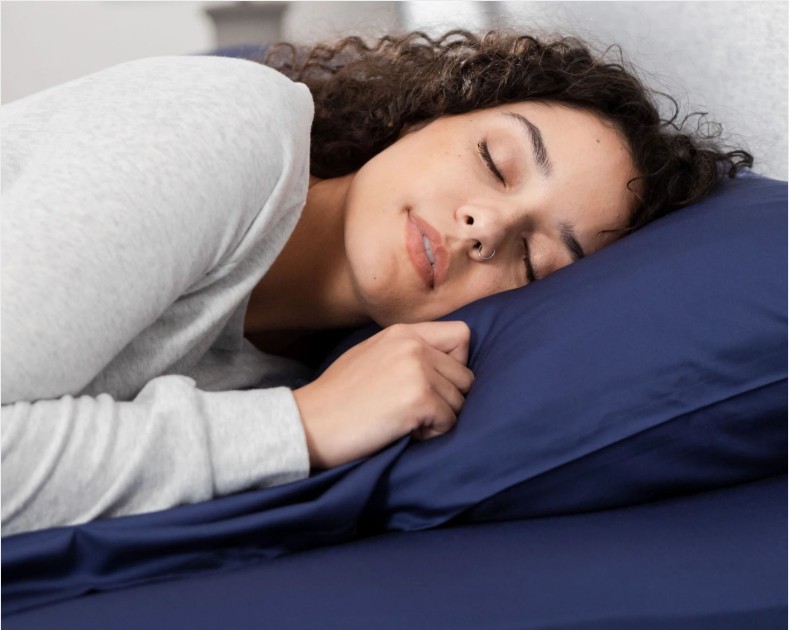
Both microfiber and bamboo sheets are soft — but in different ways:
- Bamboo has a sleek, silky feel, often described as cool and smooth against the skin. It glides over your body, offering a luxurious sleep experience.
- Microfiber has a plush, cozy texture, closer to flannel or brushed cotton. It feels warmer and stretchier than bamboo.
If you prefer a smooth, cool sensation, bamboo might be your match. If you like soft, warm bedding with a little stretch, microfiber could be the winner.
⚠️ Some people find high-thread-count bamboo sheets too slippery, while others say microfiber feels too much like plastic. Personal sensitivity to synthetic materials can be a deciding factor.
2. Durability: Bamboo Wins

Bamboo sheets are impressively durable. The natural fibers are strong and resistant to pilling when made with care. With proper washing, they’ll stay soft and strong for years.
Microfiber, while durable in its own way, is more prone to pilling and thinning. Because its fibers are so fine, they can wear down quickly and form rough patches after multiple washes.
💡 Tip: Always check customer reviews for microfiber sheets — especially for signs of early wear or pilling.
3. Affordability: Microfiber is Budget-Friendly

Microfiber sheets are usually less expensive than bamboo because they’re made with synthetic materials in a fast, low-cost manufacturing process.
Bamboo sheets, while pricier upfront, offer better long-term value due to their durability and comfort.
🛏️ If you’re shopping on a tight budget or want temporary bedding, microfiber is a solid option. But for an investment in long-term sleep quality, bamboo is worth the splurge.
4. Temperature Regulation: Bamboo is Cooler

If you tend to sleep hot, bamboo sheets are the better choice. The fabric is naturally breathable and has micro-gaps that allow heat to escape, helping you stay cool and dry throughout the night.
Microfiber, by contrast, is tightly woven and retains heat. While some microfiber sheets absorb moisture, they don’t allow air to circulate as freely, which can make you feel warmer over time.
🔥 Verdict: For hot sleepers or summer nights, bamboo is your best bet.
5. Stain & Wrinkle Resistance: Microfiber Leads
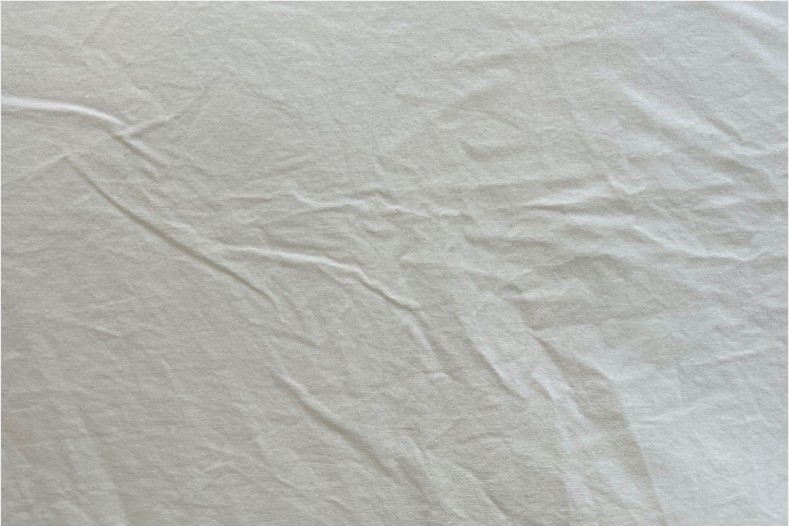
One area where microfiber shines is ease of care:
- It’s wrinkle-resistant, even if you leave it in the laundry basket a little too long.
- It’s stain-resistant, thanks to its tight weave that slows absorption.
- It dries quickly and resists shrinking.
Bamboo sheets require a bit more TLC — low heat drying, no bleach or fabric softeners — and can wrinkle if not promptly removed from the dryer. However, they’re still fairly easy to maintain with the right care.
6. Washing & Care: Gentle is Best
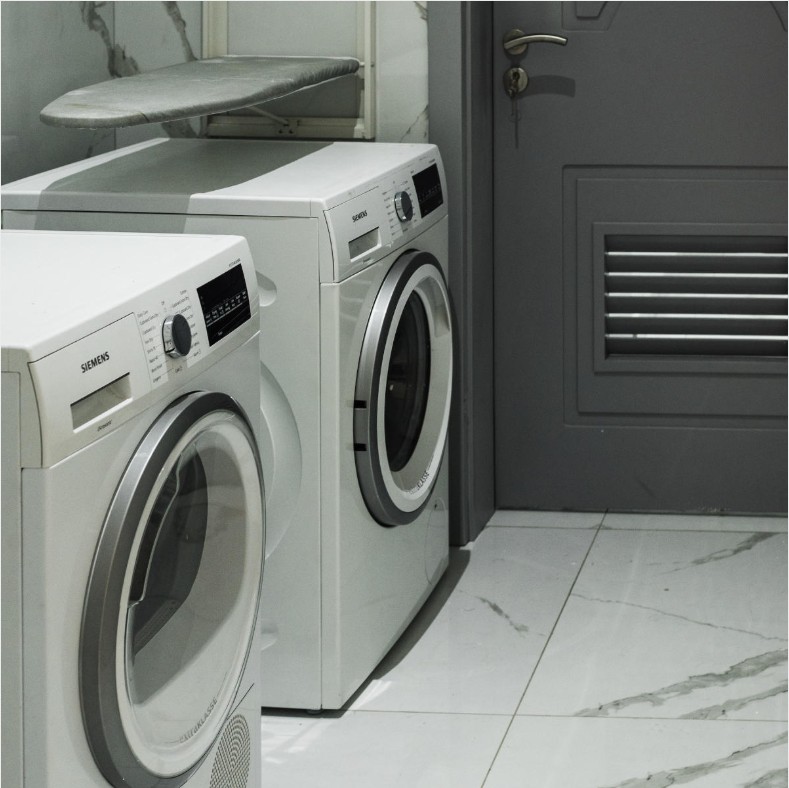
Both microfiber and bamboo require delicate washing:
- Wash in cold water with mild detergent.
- Avoid bleach or fabric softeners (they damage fibers).
- For bamboo, hang drying is best. If using a dryer, low heat only.
Microfiber can handle regular tumble-drying but may build up static.
7. Environmental Impact: Bamboo is More Sustainable

When it comes to eco-friendliness, bamboo is the clear winner:
- It’s a renewable, biodegradable resource.
- Grows fast with minimal water and no pesticides.
- Doesn’t contribute to erosion or long-term pollution.
Microfiber, being synthetic, is petroleum-based and releases microplastics into waterways during washing. It’s not biodegradable and requires more energy to produce than bamboo or cotton.
🌱 Want the most sustainable option? Choose organic bamboo sheets from reputable brands using safe, closed-loop processing methods.
Microfiber vs. Bamboo Sheets: Final Verdict
Feature Bamboo Sheets Microfiber Sheets Softness Silky and smooth Plush and cozy Durability Strong, long-lasting Prone to pilling Breathability Excellent (cooling) Moderate (retains heat) Eco-Friendliness High Low Price Higher upfront More budget-friendly Wrinkle/Stain Resistance Moderate Excellent

Which One Should You Choose?
- Choose bamboo sheets if you want:
- Luxurious, cool sleep
- Long-lasting quality
- Natural, eco-friendly fabric
- Choose microfiber sheets if you want:
- Affordable bedding
- Easy maintenance
- Soft, warm texture
Ready to experience bamboo comfort for yourself?
Try Hush Iced Bamboo Cooling Sheets — ethically sourced, ultra-durable, and unbelievably soft. With our 100-night trial, there’s zero risk in finding your perfect match.